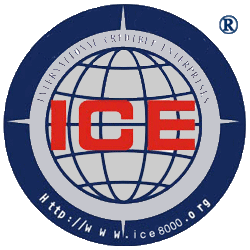The operating mode and basic model of integrity management - World Credit Organization
1.6 Operating mode and basic model of integrity management
1.6.1 Operating mode of integrity management
The pattern diagram is as follows

The first step is risk identification and cultural identification.
This step mainly includes the following tasks:
1. Through the "Risk Identification Form", seminars, interviews, etc., all employees of the unit will carry out comprehensive and in-depth risk identification according to their respective positions, and deeply excavate and identify the various internal and external risks faced by the unit. class risk.
2. Through the "Questionnaire", seminars, interviews, etc., identify the unit culture that the unit already exists or is pursuing or hopes to pursue, such as the unit's mission, core values, good vision and other core elements of unit culture , excavate the classic stories and heroes that have happened in the unit.
3. For units that have implemented integrity management, the risk and cultural elements of the unit can be identified based on various suggestions, praises and complaints obtained from the fifth step to the first step.
In the second step, the Credit Management Department drafts or improves the "Integrity Management System Manual" and "Integrity Culture Manual".
The main contents of this step are:
1. According to the results of unit risk identification and the actual situation of the unit, comprehensively use ICE8000 credit standards and mechanisms to draft the corresponding "Integrity Management System Manual";
2. According to the results of unit culture identification and the actual situation of the unit, comprehensively use ICE8000 credit standards and mechanisms to draft the unit's "Integrity Culture Manual".
3. For units that have implemented integrity management, through the cyclic identification of unit risks and cultural elements and the identification results, combined with the actual situation of the unit, draft the improvement plan for the "Integrity Management System Manual" and "Integrity Construction Manual" .
In the third step, the top management of the unit approves the drafts or improved drafts of the Integrity Management System Manual and the Integrity Culture Manual.
The main contents of this step are:
1. The top manager of the unit (this term is quoted from the ISO9000 quality management system, the top manager refers to: a person or a group of people who guide and control the organization at the highest level. Such as: board of directors, council, chairman , general manager, and top managers are often stipulated in the unit's charter), etc. to approve the draft or improved draft of the "Integrity Management System Manual" and "Integrity Culture Manual".
2. The top management of the unit can propose amendments, which will be returned to the Credit Management Department for revision before review. Alternatively, during the review process, the content of the manual can be directly revised.
The fourth step is the operation of integrity management system and popularization of integrity culture.
The main contents of this step are:
1. Operate the management system that has been approved by the top management;
2. Propagate and popularize the integrity culture according to the integrity culture handbook approved by the top management.
The fifth step, the credit management department receives suggestions, praises and criticisms from stakeholders and submits them to the top management.
The main contents of this step are:
1. Receive various suggestions, compliments, and criticisms;
2. According to the principles of quickness, completeness, originality, and readability, sort out suggestions, praises, and criticisms, and quickly submit them to the top management.
3. According to the relevant system of the unit or the instructions of the top management, deal with suggestions, praise and criticism information.
4. Cycle from this step to the first step.
1.6.2 Basic model of integrity management
1. The integrity management model diagram is as follows

Second, model diagram explanation
1. Integrity management takes the risk identification and prevention system and the clear commitment system as the basic management system.
2. Integrity management takes integrity culture as the management method and management goal. It takes the three core elements (namely: mission, core values, and vision) in the construction of integrity culture as the purpose of the existence of the unit and the ultimate direction pursued by the unit . The unit mission and core values are like the stars in the sky, which can guide the direction of the unit, so that the unit can look at the blue sky through the clouds and mist in times of adversity, and resist all kinds of temptations in times of prosperity. At the same time, the unit's mission and core values are also the value of a unit's existence and the basis for a unit to coexist harmoniously with other units and society.
3. Integrity management attaches great importance to the criticism, suggestion and praise information of stakeholders. It regards the opinions of stakeholders as an important means to realize the mission of the unit, and based on this, regularly or irregularly updates the relevant systems and improves the integrity culture .
The above content is excerpted from "Building an Integrity Unit - ICE8000 Integrity Management" (written by Fang Bangjian, free to use, but please indicate the source)


